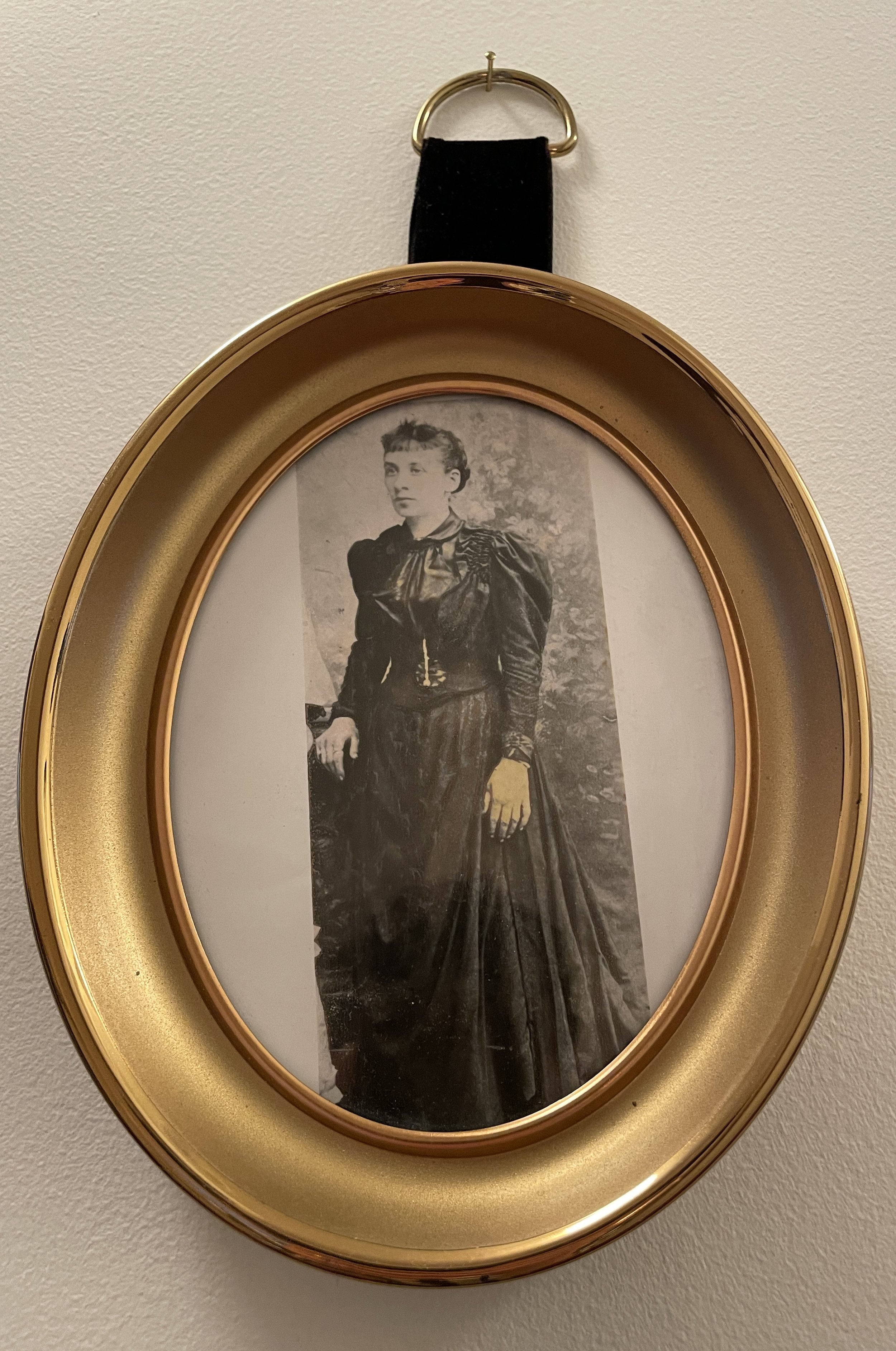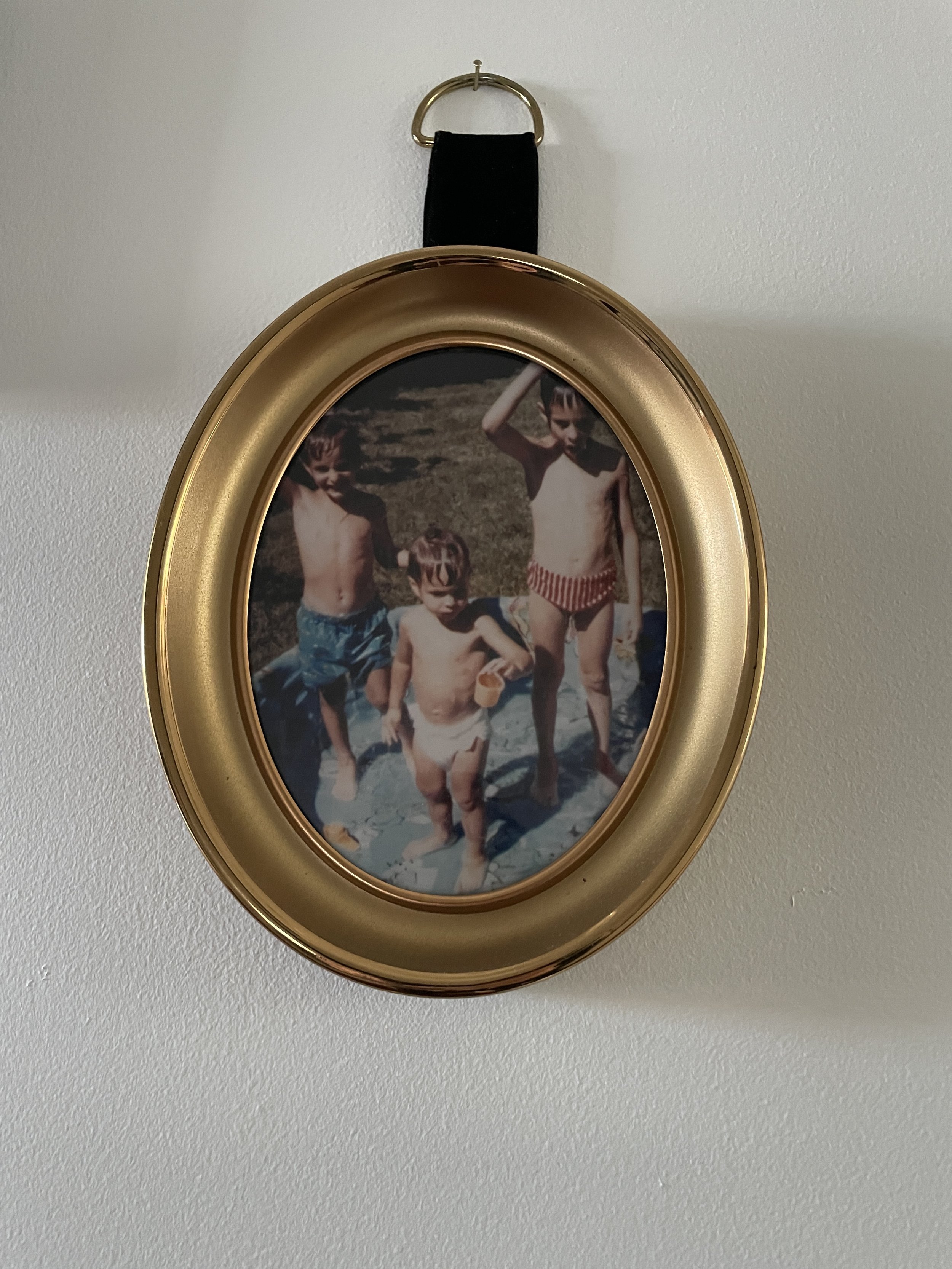The Forgotten Woman in the Gold, Oval Frame
The woman stood in a gold, oval frame. The frame hung above the small desk in my grandparents’ bedroom for at least since I was born. This was the desk where my grandmother, Nonny, wrote notes and cards and checks. The desk where she kept things like pens and stationary and correspondence and a few important documents.
I grew up next door to my grandparents. My bedroom window looked directly into their bedroom window, which was right where the desk was. I spent a lot of time in that house, in that bedroom. Only slightly less time than I spent in my own house across the yard. I knew every nook and corner of my grandparents’ house. I knew the stories of the art and the pictures. All but this one. This photo of a woman in a black dress standing in the gold, oval frame.
I never bothered to ask who she was. And if I ever did, I forgot long ago. I assumed she was family. Nonny’s grandmother, perhaps. Her clothes and the style of the photo looked like it was taken in the early 1900s. That would make her a great-great-grandmother to me. But I don’t know a lot about Nonny’s side of the family going back that far.
When Nonny died, the family quietly claimed things from the house. Furniture, art, dishes, recipe books, photos, plants… Among a few other things, my wife grabbed the gold, oval frame with the woman in it. I had no idea until I saw it hanging in the upstairs hallway of our home.
“Wait,” I said to myself but loud enough for my wife to hear me as I passed it. “This is the picture from Nonny’s bedroom. When did you get this?”
“When we took all the other stuff,” she said.
“Why? Do you know who the woman is?”
“I like the frame. I have no idea who it is. Do you?”
“Not a clue.”
“Okay. Because I’m going to put a different picture in it.”
I asked my dad and my aunts if they knew who the woman standing in the gold, oval frame was. Their guesses were as good as mine. A grandmother, an aunt… And they all agreed it was strange that no one knew. And no one will ever know. Because the people who would know are all gone. Dead. Or, if someone does know who that woman is, we don’t know who they are, and we don’t know where to find them.
This woman was someone my grandmother knew. Someone important enough to her to keep a photo of her in the bedroom—a photo she would see at the start of every day and again at the end of every day. Often times, throughout the day. This woman meant something to my grandmother. She was someone to my grandmother, and, I must deduce, to other people, too. This woman must’ve had family and friends and experiences and stories and fears and desires and a way about her. She had a sound, a look, a feel, a smell. She had an impact.
But now she has nothing. No one to memorialize her. No one able to connect us to her through Nonny. No one to talk about her life or her children or her husband or her… anything. All she has is assumptions. And even those are few. And assumptions, even when informed by facts, aren’t worth much. This woman is nothing to us, the living. Nothing but a photo that has been covered by a new photo, a younger photo with three boys people remember.
David, Eric, and Steven. Brothers. Sons of Jim and Jane. The photo was taken in the boys’ backyard, summer circa 1986. There are those alive who remember with perfect clarity the boys at that age. They boys remember that backyard and that kiddie pool. I remember that red and white striped bathing suit. The photo that now occupies the gold, oval frame is a glimpse into a tangible past. The frame does what frames are meant to do—remind us of people, a place, a time. Remind us where we came from and what we were. How we got here.
The photograph of the three boys is alive with memories. But underneath it, the woman in the black dress is hidden. Almost entirely forgotten. I cannot bring myself to throw away the photo of her. It’s not like she’s taking up space. And maybe one day, I’ll find a clue, even an answer, of who that woman was. But if not, she will still serve a purpose. When I pass the gold, oval frame, I’ll see the photo of the three young boys and I’ll remember them and all the nostalgia that comes with it. Then I’ll think beyond the photo to the one underneath it. And I’ll wonder who that woman was and why she was so important to my grandmother. And I’ll think of Nonny and the house that I sort of grew up in.
And then I’ll realize how easily we can be forgotten. How fickle our truths are. How disposable our experiences are. How, with the quiet passing of time, our entire existence can be elapsed. How we can be left hanging on a wall for a granddaughter-in-law to claim and cover up. How easily our purpose and our impact can be shrugged off. And then I’ll realize the other side of the thing. How important it is for us to keep the memories of the dead alive. How necessary our experiences are as a way to shape, guide, and anchor the future. How it’s more important that the truths other people have of us be good and worth telling because we won’t always be here to tell our truth the way we perceive it.
If we want to be forgotten, it’s up to others to remember us. All we can do is leave them with plenty to tell and hope that they choose to remember us out loud instead of quietly in a gold, oval frame in a bedroom.

